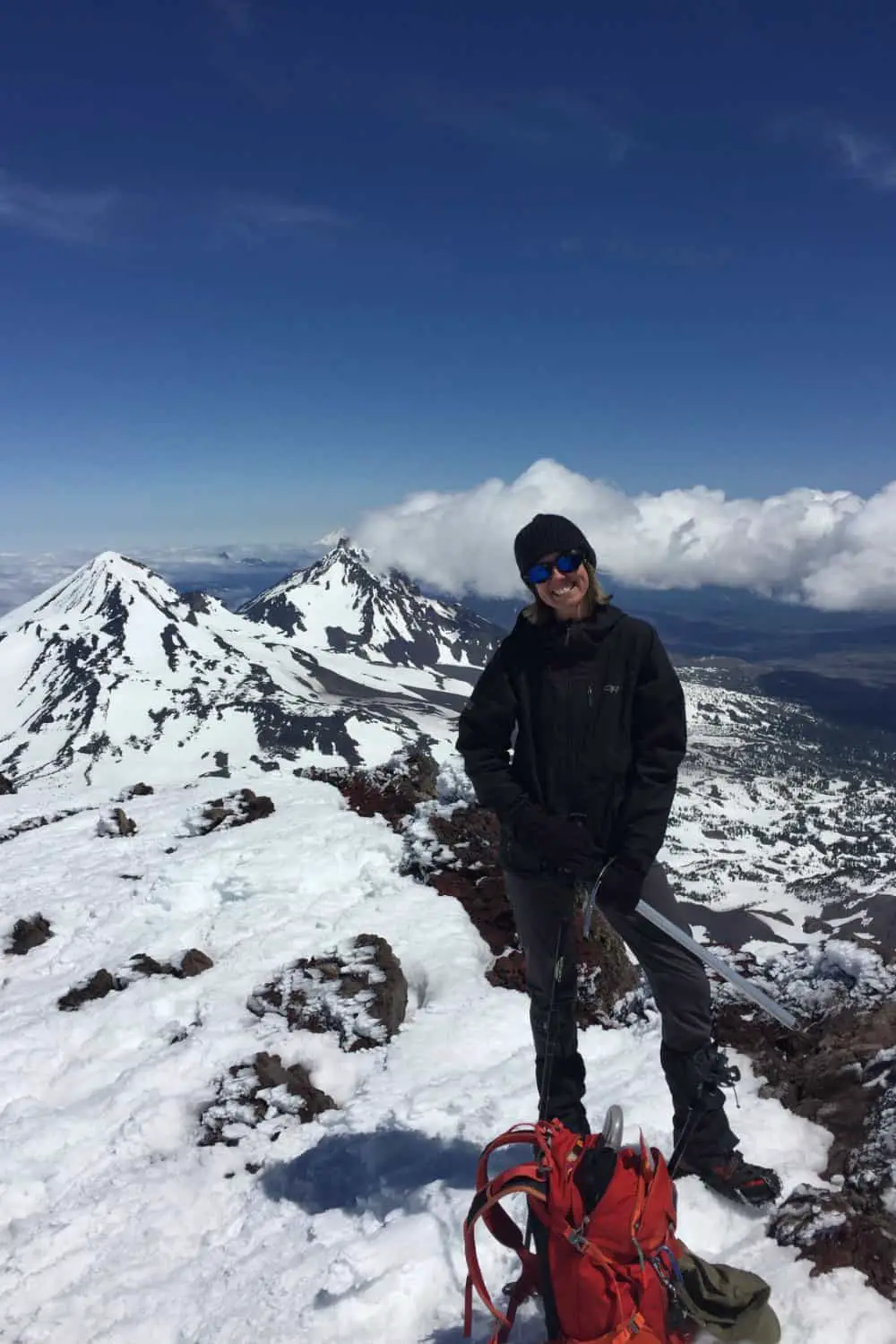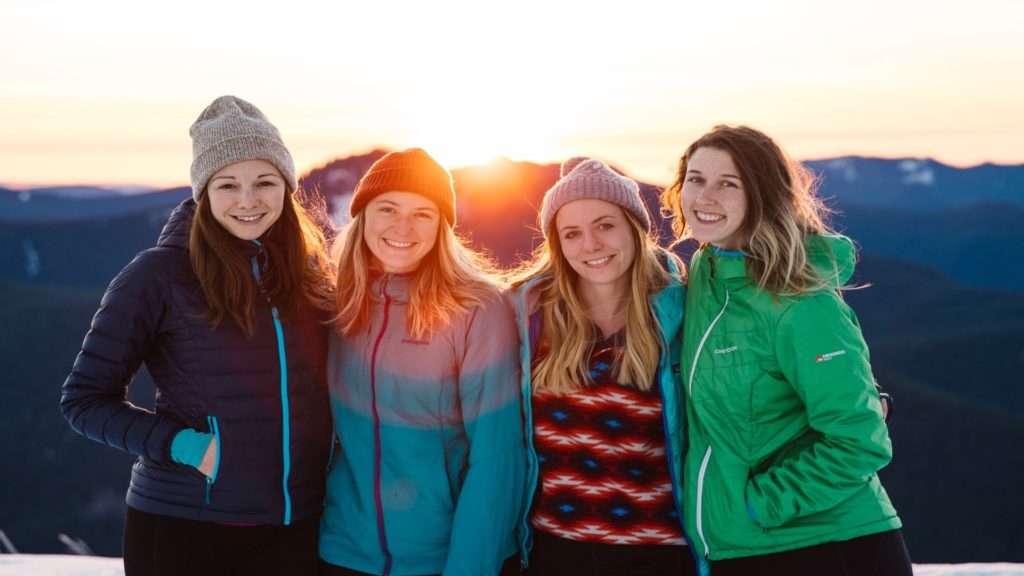A soft shell jacket is one of the most versatile items in your layering system, offering warmth, dryness, flexibility, and breathability in most weather situations. Barring anything severe like a torrential downpour or freezing temps, this would be my if-you-could-only-bring-one-jacket jacket. Lighter and less bulkier than a parka, it won’t overheat you; and with wind resistance and solid protection from the elements, it will keep you and your other layers nice and warm.
Most are treated with a DWR (durable water repellent) finish which makes water bead up and snow easy to brush off. Some are fully waterproof. You can more completely waterproof a DWR softshell jacket by washing it with Nikwax Softshell Proof in your washing machine. This may not get it as hundred-percent waterproof as if it were made of Gore-Tex but it’s darn close and a nice touch to a coat that is already weather resistant.
This layer is key in inclement weather because it protects your mid and base layers. Should the weather turn a little wetter than forecasted, your fleece would get soaked, and if a cold wind kicks up, your body heat would blow away with it in just a base and mid layer. It’s not that the softshell is all that warm on its own, it’s that it guards the heat trapped in the other layers.
Its flexible fabric is what separates a soft shell from a hard shell jacket. Most are either made from stretch fabric or have stretch panels that support your range of motion. Fully hard shell jackets do better in rain but you run the risk of saturating your base layers with perspiration if you are working at peak aerobic levels in a nylon Gore-Tex raincoat. So if you’re going to be moving, sweating, and in weather, these are your better bets:
- Waterproof Soft Shells: these allow perspiration to escape and air to circulate, keeping you and your layers dry. They are breathable enough to not produce the greenhouse effect of a hard nylon rain shell but will keep you dry.
- Water Resistant Soft Shells: these are geared more toward high activity levels in drizzly, breezy conditions and are also breathable and durable enough to fend off light rain.
The importance of this layer cannot be stressed enough, as without it, the best base layers don’t stand a chance against the extreme weather we so often encounter, and keeping your core warm and your skin dry is the difference between an enjoyable day and a miserable day, a healthy return or serious chills, or, not to be dramatic, but life and death. I guess that’s about as dramatic as it gets but a huge percentage of SAR incidents and mountain-related fatalities are due at least in part to exposure to the elements so this is one area you don’t want to forget, decide against, or play weather Russian Roulette with. Get a good one, and bring it with you. I doubt you will ever regret it.
Best Women’s Soft Shell Jackets:
- Arc’teryx Atom
- Rab Borealis
- Mammut Ultimate V
- Outdoor Research Ferrosi Hoodie
- Columbia Kruser Ridge

Wendy Harrington is a California native who has lived in a small town at the foothills of the Cascade Mountains in Washington state since 2001. Her love of trail running and peakbagging has led her to summit all five Washington volcanoes, climb to the high points of three states, and put nearly a thousand miles a year on her boots. Her loves include ridgelines, saddles, granite, one-day pushes on big mountains, anything volcanic, long solo days, and objectives that push limits and test endurance.

